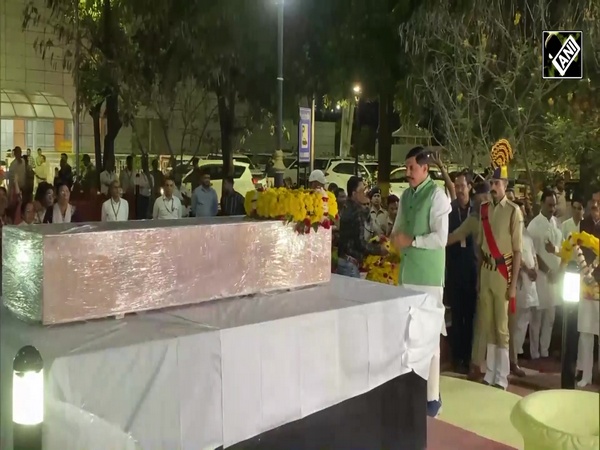Nepal passed constitutional amendment in haste for political gains?
Jun 13, 2020

New Delhi [India], June 13 : India has taken strong objection to the passing of constitutional amendment by the lower house of Nepal and said that this artificial enlargement of claims is not based on historical fact or evidence and is not tenable.
New Delhi also views this amendment as "violation of current understanding to hold talks on outstanding boundary issues."
According to a source closely following the sequence of events, "This move has even surprised many in Nepal and shows that the map was hastily drawn without any basis. It is clear enough that the new map is only a tool for political gains and is neither supported by facts nor evidence."
Nepal watchers in New Delhi also believe that "India has always stressed on a resolution of the boundary issue through diplomatic dialogue".
The outstanding boundary issues were discussed at the level of Joint Working Group in 1997 and 1998. In 2014, both sides mandated the two foreign secretaries to work on the issues of Kalapani and Narsahi-Sustaand with technical inputs from Boundary Working Group as and when required.
"During recent talks also, India responded positively to the Nepalese side and conveyed its willingness to hold the talks in a conducive environment and at a mutually convenient date. India reaffirmed its commitment for talks after Nepal objected to the inauguration of Kailash Mansarovar road by Government of India. However, without any basis in historical fact or evidence, Government of Nepal hastily released a new map of Nepal including parts of Indian territory. A constitutional amendment bill has been passed by the lower House of the Parliament for changing the national emblem to include a revised map of Nepal," the source added.
According to the historical facts, Nepal renounced all claims to territories lying west of the Kali river under Treaty of Sugauli (Article V) of 1815.
In 1817, Nepal made a claim to the area and demanded the return of villages of Tinkar, Chhangru, Nabhi and Kuthi. Lying east of Kali, first two were returned to Nepal. But the Governor-General of India rejected its claim to Nabhi and Kuthi as they lay west of Kali. The question of the source of Kali river was also settled by the same ruling.
Nepal's shifting claims of Kuthi Yankti and Lipugadh streams as Kali river are incompatible with the Treaty of Sugauli and the 1817 decision of Governor-General of India. Its claims are also contrary to its own boundary treaty and protocols signed with China
Analysts here also believe that Nepal has encroached on Indian territory in Narsahi and Susta area in Bihar by settling its own population and through various construction activities.
Nepal government has recently decided to form an expert team to "find and collect" evidence to establish Nepal's ownership in Kalapani and Susta areas after publishing a new map and passing a Bill in its lower House to amend 'Coat of Arms'.
Sources familiar with development believe Government of Nepal's unilateral act of updating Nepal's map and hasty efforts to amend the Coat of Arms prove that the intention is to politicize the boundary issue.
They said these actions do not reflect any seriousness on part of the Nepalese government to discuss and resolve the issue through dialogue and are myopic and self-serving to further a limited political agenda.



















